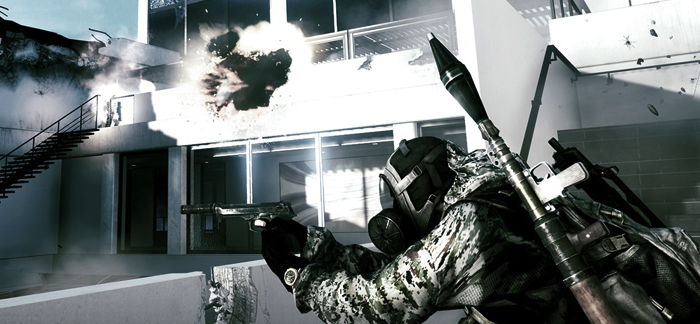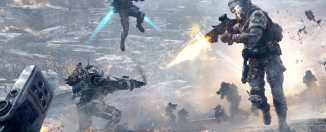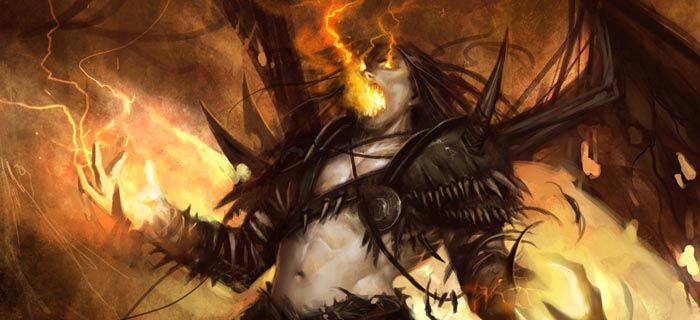Surviving Battlefield 3’s Close Quarters DLC
NOTE: I’ll have a full analysis of Dawnguard when Bethesda does their next reveal. I figure enough people have done E3 analysis that it’s not worth doing just now.
I’ll come out and admit it here. I’m something of a whore when it comes to subscription services. I paid fifty bucks for Call of Duty’s bullshit Elite offering, and I don’t play Modern Warfare 3 at all anymore, PC or console.
Then we hear about EA’s answer: Battlefield Premium. “Great,” thought I, “another shit service for another fifty dollars of debt.” And for about a minute I scoffed at ever even considering forking the cash over. Then I learned I’d have to wait a whole month for the Close Quarters DLC. Adding fuel to my wallet’s slow burn into nonexistence was the fact my Battlefield friends would, invariably, pay up for one reason or another. I’d be left DLC-less, new weapon-less, and the butt of too many jokes to put a good name on. So I gave in, and I’ve been playing Close Quarters for a week now. It isn’t your older brother’s Battlefield.
Here’s my quick and dirty guide to succeeding in the new DLC, if you’ve not played a fast-paced, twitchy shooter before (excluding BF3, if you consider it a twitch shooter now).
Two solutions to the problem
I’m going to assume, because I’m a pretentious asshole, that Battlefield is your main game. That assumption in mind, I’m going to further guess that you’re used to large, wide open maps with the occasional frenetic gunfight over an objective, or as a part of Squad/Team Deathmatch. Going into Close Quarters, know this: what you think is exactly the case. There is rarely a dull moment on these maps. The chaos is everywhere, and it is constant. Even if there’s a lull in the action for you, the sounds of battle won’t be far away, and if you follow them, your gun will be spitting bullets in no time.
However, because the larger maps often provide long periods of calm without even the sound of battle, you as a Battlefield player probably aren’t used to the constant rush of conflict. And with Close Quarters designed to provide non-stop action, it can be hard to switch gears so completely.
There are two solutions to this problem. The first probably won’t work, but I’m going to mention it anyway. The second gets it’s own section.
Option 1: Take a break from Battlefield and play a twitchy shooter. It doesn’t have to be CoD, but it can be. Whatever it is, make sure it’s faster than the core BF3 modes, and preferably with far smaller maps.
Option 2: The buildup
Making the switch from large to small in any context is a jarring one, but in the case of Close Quarters, it’s almost sanity jarring. If you thought spawns in Team Deathmatch could be bad, be prepared for an unwanted wake-up call. CQ spawns are, by necessity, unpredictable and more often than not head scratching affairs.
But before you spend any time dealing with the constant action or the stupid spawn logic and everything else this DLC has to offer, you need to ease yourself in. I know for a fact that if I’d gone into Close Quarters cold, there’d of been problems. My first bit of advice for newcomers to this game style is a simple one.
Just look at the maps.
Find an empty server for each of the four maps and walk through it. Take ten minutes with each and really analyze what’s there. Do circles on each floor, as each map is three levels high. Have a good idea where entrances to objectives are, where the flank routes run, and where they come to a dead end. Look for any possible glitches/troll spots, because if you don’t know where they are, having them used against you will be even more annoying.
Most of all though, get a feeling for the relative size of the maps. You’ll notice that if you spread the three floors out on a plane, they might be a small-medium sized TDM map. Because their stacked, however, everything plays smaller.
Once you feel like you’ve got a fair handle on the layouts, don’t jump straight into 16/24/32 man Conquest Domination. Instead, find an 8 man server, or a larger server with fewer players. You’ll still run into a ton of people, but the lulls between gunfights will be longer, and you’ll still learn basic traffic patterns. If the server fills up as you play, instead of being dropped directly into the chaos, it will build gradually, and your adaptation to it will be easier.
I’d suggest using the small or growing server model for a couple hours, if not a couple days, since when you do finally jump in headfirst into a 24 or 32 man server, I can promise you several things.
- You will be lost.
- You will die and not know how.
- You will be overwhelmed.
I promise not because I don’t think you have what it takes to succeed in a new setting. I promise because that’s just how it goes. Even a week of playing on the new maps and modes, and it still takes me about a half hour to know which way is up, which door leads to what flag, and where, precisely, the map ends and the death begins. Or vice versa.
Hell, I’m still running into walls half the time, wondering why I’m not moving.
But maybe that’s the squirrel in me.








I am defeated in trying to say something clever… so, I’m going to say that these tips were pretty helpful to me. I’m glad I read it.
Thanks, I’m glad I could help.
And if you can’t think of anything clever, say something incoherent. I’d appreciate it, at least.
thnx !!! option 1 worked for me
Good to hear!
The small frog lazed listlessly in the meadow. Is that incoherrant enough for you?
Hmm. Nope. I can make our exactly what that means.
Here’s an old standby from me.
“Why is the mouse that spins?”
Answer tonight at 13:00!